Все способы:
- Способ 1: Сброс TCP/IP
- Способ 2: Решение проблем с драйвером сетевой карты
- Вариант 1: Обновление
- Вариант 2: Откат состояния
- Вариант 3: Переустановка
- Способ 3: Отключение стороннего антивируса
- Способ 4: Откат системы
- Вопросы и ответы: 0
Способ 1: Сброс TCP/IP
Сброс TCP/IP позволяет сбросить сетевые настройки, и эта процедура может помочь, поскольку ошибка с файлом Tcpip.sys, вызывающая BSOD, напрямую связана с этими протоколами. Сделать это несложно, достаточно знать несколько команд:
- Запустите «Командную строку» от имени администратора. Для этого введите в поиске по «Пуску» запрос
cmdи выберите соответствующий пункт из списка справа. - В окне консоли поочередно выполните команды, вводя их и нажимая после каждой клавишу «Enter»:
ipconfig /flushdns
ipconfig /registerdns
ipconfig /release
ipconfig /renew
netsh winsock reset catalog
netsh int ipv4 reset reset.log
netsh int ipv6 reset reset.log
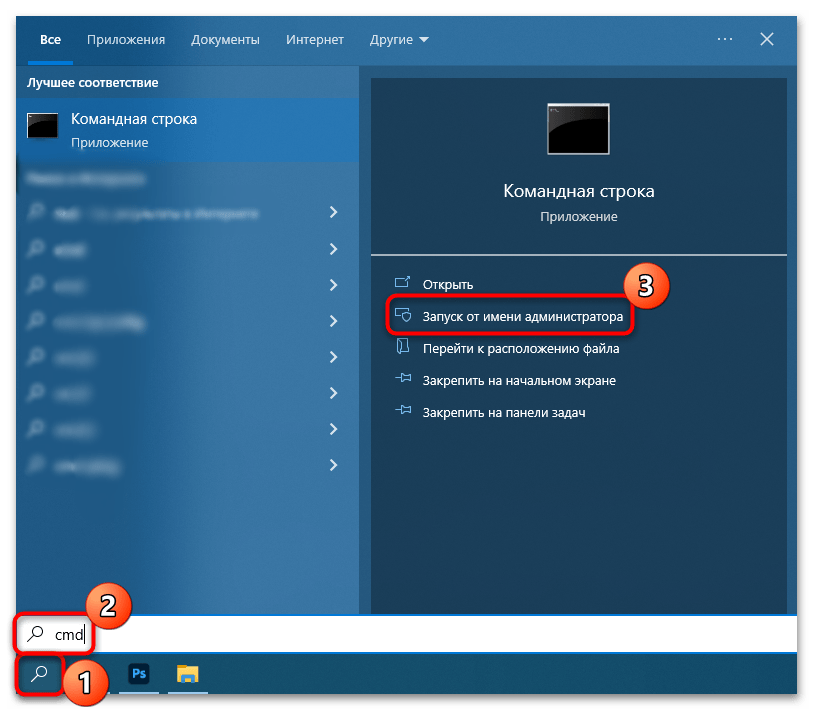

После того как все команды окажутся выполнены, перезагрузите компьютер.
Еще один метод сбросить настройки протоколов подразумевает использование одной из функций системных «Параметров». В этом случае окажутся сброшены все настройки сетевых адаптеров, поэтому лучше выполнить его, если предыдущая инструкция не принесла эффекта:
- Нажмите на кнопку «Пуск» и выберите «Параметры».
- Перейдите в раздел «Сеть и Интернет».
- На вкладке «Состояние» пролистайте основное окно вниз и кликните по ссылке «Сброс сети».
- В новом окне подтвердите действие, нажав на кнопку «Сбросить сейчас».
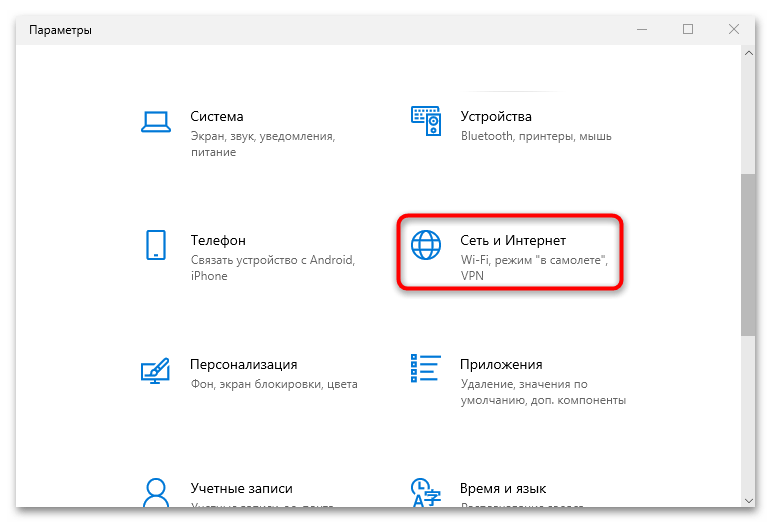


По окончании обязательно потребуется перезагрузка системы. Сделайте это и мониторьте работу ОС, чтобы проверить, ушла ли проблема.
Способ 2: Решение проблем с драйвером сетевой карты
Ошибка Tcpip.sys вызывает синий экран в Windows 10 из-за сбоя в работе программного обеспечения сетевого адаптера. Вероятно, драйверы устарели или произошла ошибка, влияющая на работу оборудования. Тогда может помочь обновление или переустановка драйверов.
Вариант 1: Обновление
В первом случае установить апдейты для оборудования можно с помощью штатных возможностей:
- Щелкните правой кнопкой мыши по кнопке «Пуск» и из меню выберите пункт «Диспетчер устройств».
- В новом окне разверните список «Сетевые адаптеры» и отыщите сетевую карту. Обычно в названии есть слово «Realtek», поскольку у большинства ПК и ноутбуков встраивается оборудование от этого производителя, а также слова LAN или PCIe. Если около устройства отображается значок в виде восклицательного знака, то это значит, что драйвер устарел. Чтобы обновить его, щелкните правой кнопкой мыши по названию и выберите «Обновить драйвер».
- В новом окне выберите автоматический поиск и дождитесь, пока необходимые компоненты будут установлены.
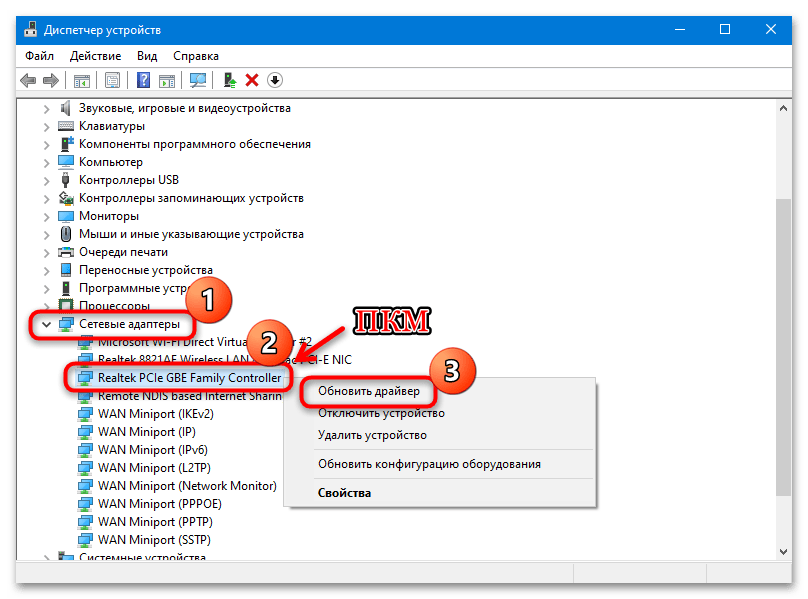
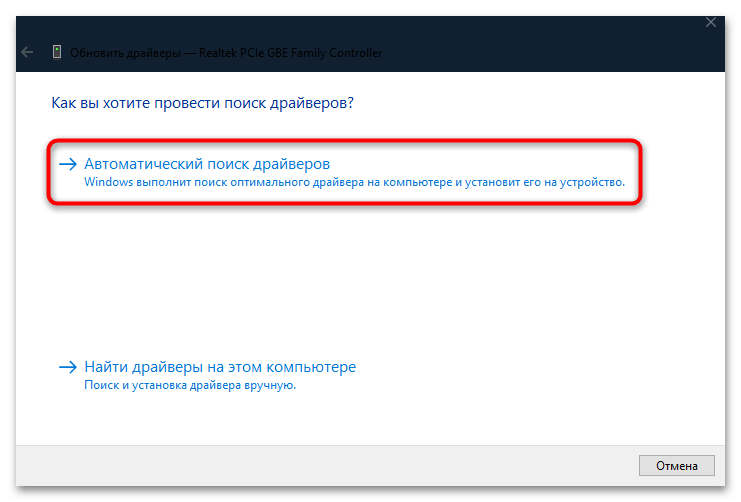
Следует отметить, что большинство необходимых для системы и оборудования драйверов обновляются вместе с апдейтами Windows 10.
Читайте также: Обновление Windows 10 до последней версии
Вариант 2: Откат состояния
Иногда срабатывает обратное — откат состояния программного обеспечения до предыдущего, особенно в случае ошибок, возникших, к примеру, при обновлении. Для этого через контекстное меню оборудования в «Диспетчере устройств» перейдите в «Свойства».

В окне выберите вкладку «Драйвер», затем нажмите на кнопку «Откатить», если она подсвечивается. Если она недоступна для нажатия, значит, предыдущее состояние система не сохранила.
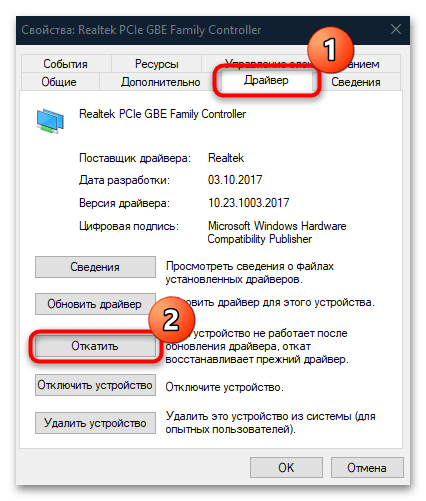
Вариант 3: Переустановка
Последний вариант решения проблем с драйверами наиболее сложный, но может оказаться эффективным, если предыдущие рекомендации не помогли. В этом случае придется полностью удалить ПО для сетевого оборудования, затем снова установить его. Причем обычно система самостоятельно их инсталлирует после перезагрузки Windows, но настоятельно советуем на всякий случай заблаговременно ознакомиться с нашей статьей, где описаны методы поиска и скачивания необходимых компонентов, а также варианты их ручной установки. Это пригодится на случай, если автоматически драйвер установиться не сможет — у вас будет вручную скачанный экземпляр ПО, которым вы и воспользуетесь.
Подробнее: Инсталляция программного обеспечения для сетевого адаптера в Windows 10
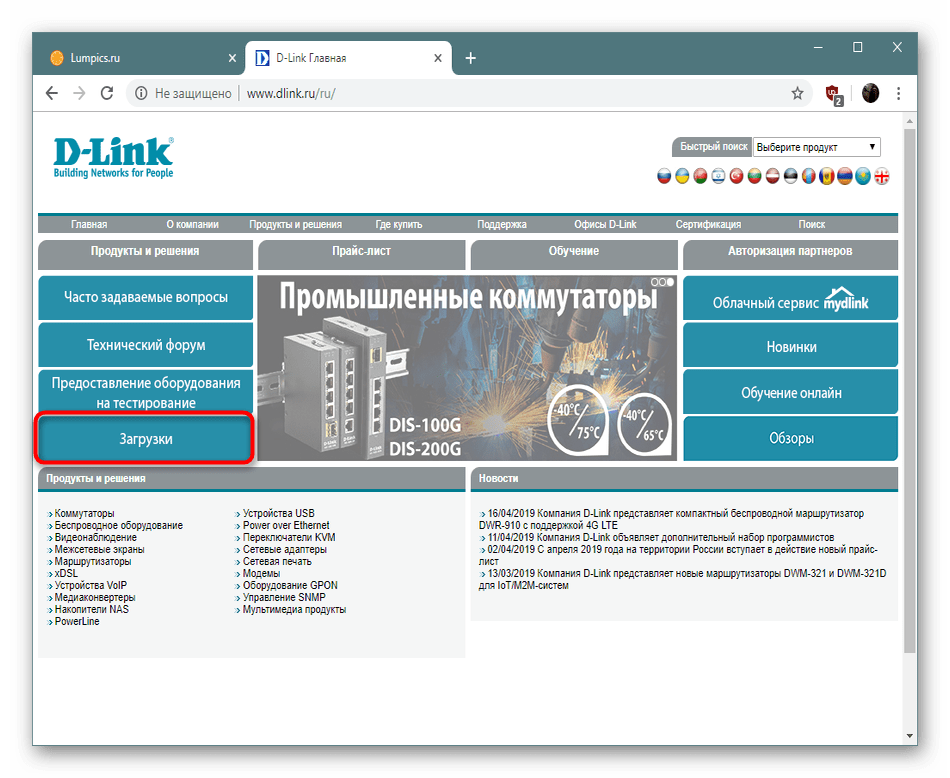
Лучше для удаления и установки драйверов запускать систему в «Безопасном режиме». Это позволит предотвратить возможный конфликт ПО со сторонними службами и процессами. Как загрузить Windows 10 в этом режиме, мы писали ранее.
Подробнее: Безопасный режим в Windows 10

Когда зайдете в систему через «Безопасный режим», откройте «Диспетчер устройств» и в списке «Сетевые адаптеры» поочередно кликайте по каждому устройству правой кнопкой мыши и выбирайте функцию удаления.
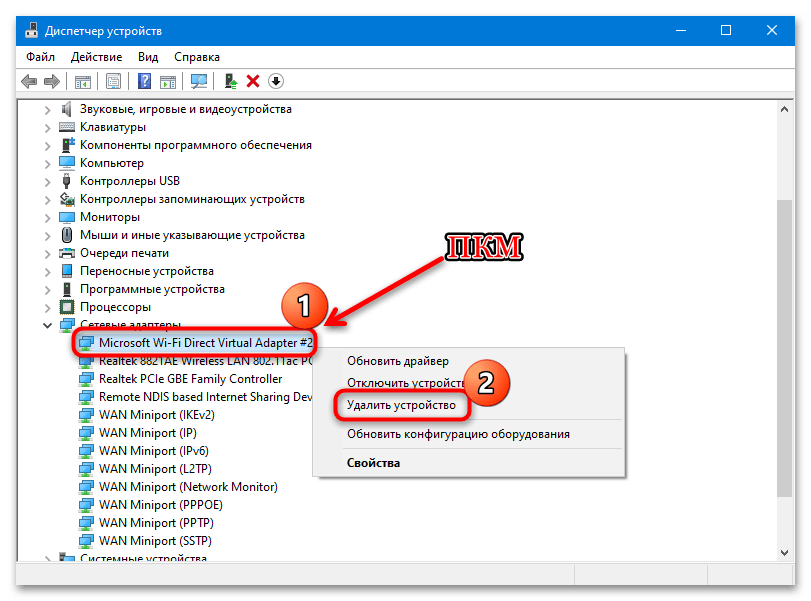
Как только все драйверы будут удалены, перезагрузите Windows 10. Если автоматической установки ПО не произошло, то возвращайтесь в инструкции выше, где описано, как это сделать вручную.
Способ 3: Отключение стороннего антивируса
Еще одна распространенная причина появления BSOD из-за Tcpip.sys – это сторонние антивирусы, которые вмешиваются в сетевые подключения. Чтобы проверить, так ли это, на время отключите работу такого софта. В большинстве случаев достаточно щелкнуть правой кнопкой мыши по значку программы в трее и выбрать пункт «Выйти» или «Закрыть», в зависимости от интерфейса. Также это сделать можно через настройки, но алгоритм действий отличается, поэтому универсальной инструкции нет. В нашем отдельном материале вы найдете инструкции для наиболее распространенных антивирусных решений.
Подробнее: Отключение антивируса
Если после отключения антивируса синий экран с Tcpip.sys перестал появляться, то, скорее всего, придется удалить программу и использовать другую в качестве альтернативы.
Способ 4: Откат системы
Если вы недавно устанавливали программы или вносили изменения в настройки системы, что особенно касается редактирования реестра, то некоторые такие действия могли привести к ошибке, поэтому есть смысл попробовать откатить ОС до контрольной точки восстановления. В этом случае все новые параметры будут сброшены, а установленный после контрольной точки софт — полностью удален.
Если на компьютере активна функция создания точек восстановления, откатить Windows 10 можно в несколько кликов, используя встроенные возможности. Наш автор подробным образом разбирал алгоритм действий.
Подробнее: Откат к точке восстановления в Windows 10
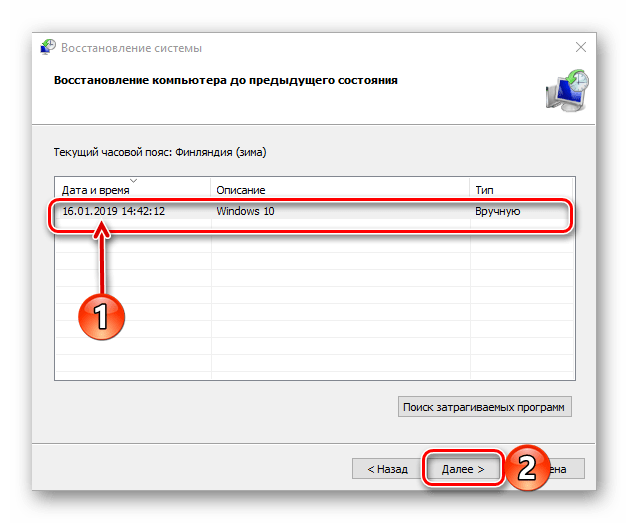
Наша группа в TelegramПолезные советы и помощь
To all the Windows users, Blue Screen of Death errors are no longer surprises and it may happen anytime even out of nowhere. Tcpip.sys CRITICAL_STRUCTURE_CORRUPTION is a stop error or BSOD in Windows 10 occurs mostly in the stale Windows 10. However, users frequently confront the same issue while choosing to Upgrade Windows over running a clean installation. The snag is annoying, forces the system to reboot all of a sudden, and shows error messaged continuously. System experiences a fatal crash with some of the conflicting components and prepares to restart upon generating Tcpip.sys BSOD error.
Tcpip.sys CRITICAL_STRUCTURE_CORRUPTION BSOD error is mostly related to memory problems and usually generates codes like ntfs.sys, tcpip.sys. It happens when Windows detects some modifications in the files stored in the memory, invalid entries in the Registry, or from a critical hardware failure. Furthermore, malware infection, outdated BIOS, driver incompatibilities, corrupted system files will generate this error code off and on. Nevertheless, the issue is an annoying one, its not completely irrecoverable and fixes easily upon deploying some workarounds. Follow the below methods and try fixing Tcpip.sys blue screen error.
Tcpip.sys Blue Screen Error with CRITICAL_STRUCTURE_CORRUPTION Error Windows 10
Here is how to fix Tcpip.sys CRITICAL_STRUCTURE_CORRUPTION Error Windows 10 –
1] Update the graphics card driver
Most blue screen errors are generated from the issues and incompatibilities in the device drivers. For the Tcpip.sys CRITICAL_STRUCTURE_CORRUPTION Error, a faulty or outdated graphics card driver can be named. Because these components control the communication between external accessories and the computer bus, outdated drivers can cause non- functionality in the Windows operated machine and a fatal crash.
To make a driver up to date, you can try out some third-party application or tool but nothing is better than default Device Manager. You can check an outdated device observing yellow indication; easily fix their incompatibilities even roll back a defective update. Updating Graphics card driver may resolve the blue screen error as happened many times before. To accomplish this task, follow the guidelines –
- Press the – Windows key and type – devmgmt.msc.
- Click the – Device Manager option.
- Locate the Display adapters in the new window.
- Expand the drivers by double-clicking the device.
- Right click the driver having yellow indication only.
- Select the – Update Driver option from context.
- From the next pop up, click the – Search automatically for updated drivers option.
- At last, reboot the system.
See – How to Uninstall, Disable, Roll Back, Update Device Drivers in Windows 10 / 8 / 7
2] Check the hardware components and fix their issues
BSOD errors can occur in a Windows Operated machine because of problems both in hardware and software sides. There are some critical issues that commonly affect a device are – defective areas in hard disk, malfunctioning Power Supply Unit, problematic RAM stick. Accessories connected through USB port like mouse, keyboard, speaker, or printer can also cause the same trouble. However, we have found the fix is pretty simple i.e. remove these peripherals temporarily and restart the device.
In case the error isn’t solved by removing the external peripherals, try to run the Windows Hardware Troubleshooter. To run this, follow the below guidelines –
- Open the Start menu pressing the Windows key once.
- Click the – Power icon.
- Select the – Restart option and at the same time hold Shift key down.
- Windows will perform a Restart and boot to Automatic Repair.
- Once in the following blue screen, select Troubleshoot.
- Simultaneously choose Advanced options => Command Prompt.
- Once directed to the Elevated Command Prompt window comes in, enter the following line –
msdt.exe -id DeviceDiagnostic
- Press the – Enter.
- Hardware and Devices Troubleshooter page will appear instantly.
- Click the – Next.
- The tool will detect the hardware trouble in the computer and fix it immediately if found any.
3] Replace defective RAM if necessary to fix Tcpip.sys BSOD
A defective RAM unit often found to cause Tcpip.sys CRITICAL_STRUCTURE_CORRUPTION Error in Windows 10. Sometimes a RAM comes with problems from the time of manufacturing. Sometimes the machine can be exposed to external damage which eventually affects it and you will experience BSOD error.
We know that the only solution in case of a defective RAM is to replace the entire unit which is costly. Therefore, a confirmed diagnosis is necessary before buying a new one and for that, the Windows Memory Diagnostic tool is provided. The utility carries out a few tests and traces out problems in Windows memory, RAM, etc. After checking the complete report from the memory diagnostic tool; you can decide to replace the RAM if necessary. To deploy the utility, follow the below instructions –
- Click the taskbar search box Type memory and hit – Enter.
- From the Windows Memory Diagnostic tool, click the – “Restart now and check for problems (Recommended)” option.
- A blue screen will show up immediately and start detecting memory problems.
- When the diagnosis ends up, windows will reboot again.
- You will get a notification in the System Tray from Windows Memory Diagnostic Tool in the succeeding startup.
- Check the report and see if the RAM needs to be replaced.
4] Run system file checker to repair corrupted components
Windows System files are very much essential to run various services in the machine as well as helps to operate the OS seamlessly. There are times these files can be corrupted such as after a malware infection, sudden power surge, or when a Windows update fault occurs. Essential files like .DLL can also go missing from the device if a software collision takes place between similar applications. Corrupted or missing system resources will cause a fatal crash leading to generate Tcpip.sys CRITICAL_STRUCTURE_CORRUPTION Error in Windows 10.
To retrieve these system files as well as recovering the .DLL files, we can run SFC scan in Elevated Command Prompt. For that, follow the below steps –
- Press the – Win+R.
- Type in – cmd.
- Hit the – Ctril+Shift+Enter.
- When the UAC prompts up, click – Yes to provide consent.
Sfc /scannow
- Next, press the – Enter.
- System File Checker tool will try detecting the corrupted system resources and fix them accordingly.
- Once finished, restart Windows and check if BSOD error is resolved.
5] Check Event Viewer for Tcpip.sys Blue Screen Error
Event Viewer is an application that can trace out easily what last thing happened to the computer before it experienced the crash. The administrative tool may also give a clear indication about which application, service, or any other problems caused BSOD error.
If the built-in program can detect one or more such problematic programs, you can simply rule them out and fix the error. Similarly, a problematic service can be disabled in order to resolve Tcpip.sys CRITICAL_STRUCTURE_CORRUPTION Error in Windows 10. To run the Event Viewer, proceed with the below-mentioned instructions –
- Click the taskbar search, type eventvwr and then hit Enter.
- In a few moments, the Event Viewer window will open up.
- Double click the – Windows Logs from left pane.
- Select the – System.
- Middle section will now show all events with timestamps.
- Find out the last event recorded before the sys CRITICAL_STRUCTURE_CORRUPTION Error.
If it’s a service or application, you can assume them responsible for this error and take necessary actions accordingly.
6] Remove problematic programs
Microsoft designed Windows 10 with so many new utilities, default applications, necessary services. Yet some people need additional tools for specialized tasks that can easily be found in the Microsoft Store. In lieu of downloading from the authorized vendors’ platform, some users opt for corrupted sources. Third-party applications from the untrusted platform can be buggy. Some similar programs will cause a software clash leading the system to lose essential .dll files. Tcpip.sys CRITICAL_STRUCTURE_CORRUPTION Error in Windows 10 often occurs due to installing some unnecessary programs.
Users must restrain from installing programs from unauthorized and corrupt vendors to avoid unexpected errors. If you have installed some of these, remove them using the below instructions –
- Press Windows key and Q at once.
- In the Taskbar Search box, type the – appwiz.cpl.
- Press the Enter key.
- From the Programs and Features window, locate the problematic application.
- Right click once reached.
- Select the – Uninstall.
- Confirm the selection by clicking “Uninstall” again.
- Follow on-screen guidelines to completely remove this application.
- Restart Windows and check if the error is resolved.
7] Follow Guidelines from Windows support for Tcpip.sys Blue Screen Error BSOD error
Most blue screen errors are really annoying and irrecoverable sometimes as they arise in the machine out of nowhere. Microsoft Support has been an outstanding platform for various issues happening in the system over the years. Since blue screen errors are pretty common nowadays, Microsoft dedicated another help section. Based on a few answers from users, the webpage will show stepwise guidelines for fixing BSOD error.
In order to fix Tcpip.sys CRITICAL_STRUCTURE_CORRUPTION Error in Windows 10, you can take help from Microsoft support website. For that, follow the below steps –
- Visit this page to access Microsoft online troubleshooting section using your default web browser.
- Scroll down and reach to the When did you get the error? region.
- Select any options between –
After an update was installed
While using my device
- The page will be rearranged now and show you stepwise tasks in order to fix the Blue Screen error.
- Follow them to the point properly and fix the error accordingly.
8] Perform Clean Boot
A Clean boot is an outstanding way of troubleshooting critical issues happening in Windows. When a device experiences a fatal crash, Clean boot makes the process easier for finding the root cause. The process allows only essential programs and services to be loaded at the Startup. Hence, third party programs ruled out from booting process and troubleshooting cuts down to half.
Performing a Clean Boot will help you find the exact root of the Tcpip.sys CRITICAL_STRUCTURE_CORRUPTION Error in Windows 10. Based on that, you can take necessary steps and fix the error. You can follow the below procedure to accomplish this workaround –
- Type in – msconfig in the search and press the – Enter.
- Scroll down in General tab and click the radio button set for – Selective startup.
- Uncheck the box that reads – Load startup items.
- Enter – Services tab and check the box that reads – Hide all Microsoft services.
- Hover down and click the – Disable all button.
- Return back to Startup tab and click the link to – Open Task Manager.
- In the Task Manager window, right-click on each program listed here and choose Disable for each.
- Return back to the – System Configuration again.
- Click – Apply.
- Hit Ok to save the changes.
- Select the – Restart on the confirmation dialog.
For more detail see – How to Clean Start Windows 10 PC.
9] Run DISM tool in elevated Command Prompt
Defective Windows image files are very much like to cause Tcpip.sys CRITICAL_STRUCTURE_CORRUPTION Error in Windows 10. These files are the snapshots of ISO files released before any major Windows Upgrade. However, these components can also be corrupted easily by some malware infection or third party programs.
DISM tool is really handy as well as default tool for repairing these image files once activated in Elevated Command Prompt. Surprisingly the tool is equally applicable for offline images as well. To run the scan, proceed with below steps –
- Access elevated command prompt using the steps in the 4th method.
- Insert the below command –
DISM /Online /Cleanup-Image /RestoreHealth
- Press the – Enter to allow the DISM tool carrying out scan.
- The process may take a little longer, we recommend you schedule the task accordingly.
- Once done, Restart the computer and check if BSOD has resolved once next session starts.
Methods list
1] Update the graphics card driver
2] Check the hardware components and fix their issues
3] Replace defective RAM if necessary
4] Run system file checker to repair corrupted components
5] Check Event Viewer
6] Remove problematic programs
7] Follow Guidelines from Windows support for BSOD error
8] Perform Clean Boot
9] Run DISM tool in elevated Command Prompt
That’s all!!
Table of contents
- Causes of the tcpip.sys Blue Screen Error
- Common tcpip.sys Error Description That Could Appear on Your Screen
- 1. “Windows unexpectedly shutdown due to a problem with tcpip.sys”
- 2. “0x050 – tcpip.sys: PAGE_FAULT_IN_NONPAGED_AREA – tcpip.sys”
- 3. “:-( An error from tcpip.sys has caused a problem, and your PC must restart.”
- 4. “0x0000001E STOP: KMODE_EXCEPTION_NOT_HANDLED – tcpip.sys”
- 5. “STOP 0x0000000A: IRQL_NOT_LESS_OR_EQUAL – tcpip.sys”
- How to Fix the tcpip.sys BSOD in Windows 10/7/8
- Fix 1: Reset the TCP/IP
- Fix 2: Update the network card drivers
- Fix 3: Use the blue screen troubleshooter
- Fix 4: Uninstall recent updates.
- Fix 5: Disable web protection.
- Conclusion
- FAQ
Thetcpip.sys is a necessary driver file associated with the Transmission Control Protocol over Internet Protocol (TCP/IP) in Windows operating systems in Windows functions. This file is crucial. So any damage or corruption to it can lead to serious system errors, such as the tcpip.sys Blue Screen of Death (BSOD) error.
That’s why backing up your data regularly is advisable to avoid this issue. That said, this guide will show you how to fix the tcpip.sys blue screen error.
Let’s begin.
Causes of the tcpip.sys Blue Screen Error
There are numerous reasons why the tcpip.sys BSOD error occurs. Some of the common reasons are:
1. Improper software installation. An incomplete or interrupted software installation can cause the tcpip.sys error. Reinstalling the application usually fixes this issue.
2. Corrupt or outdated network drivers. Network drivers that are corrupted or outdated can also cause a BSOD error. Updating your drivers can fix this issue.
3. Antivirus settings that conflict. The BSOD issue may occur if you have an installed third-party antivirus application and its incompatible settings. You can usually resolve this issue by disabling or adjusting the antivirus settings.
Related: How to Find Out the Causes of Your BSOD on Windows 10, 8, 8.1?
Common tcpip.sys Error Description That Could Appear on Your Screen
Several tcpip.sys BSOD errors can appear on your screen. Some of them are:
1. “Windows unexpectedly shutdown due to a problem with tcpip.sys”
This error message shows that Windows had an unexpected shutdown due to a problem with the tcpip.sys file. The main cause of the problem can vary. However, it usually comes from a conflict with or corruption in the tcpip.sys driver or related components.
Related: [FIXED] How to Fix “Windows 10 Won’t Boot” Problem Easily
2. “0x050 – tcpip.sys: PAGE_FAULT_IN_NONPAGED_AREA – tcpip.sys”
This error code directly relates to the tcpip.sys driver and shows a page fault in a non-paged area. It indicates that Windows tried to access an unavailable or invalid memory address. The possible causes could be hardware, driver compatibility, or memory corruption.
Also Read: Page Fault in Nonpaged Area: Expert Tips and Tricks for Windows Users
3. “:-( An error from tcpip.sys has caused a problem, and your PC must restart.”
This error message means that a tcpip.sys file error caused a critical system problem. In this case, you should restart your Windows to avoid further instability or potential data loss. The root cause may be software compatibility problems, other driver incompatibilities, or damaged system files.
4. “0x0000001E STOP: KMODE_EXCEPTION_NOT_HANDLED – tcpip.sys”
This error message shows a “kernel mode exception not handled” error related to the tcpip.sys driver. It means that a program running in kernel mode ran into an exception that it couldn’t manage. The cause could be hardware malfunctions, software problems, or outdated or incompatible drivers.
5. “STOP 0x0000000A: IRQL_NOT_LESS_OR_EQUAL – tcpip.sys”
This error shows an “IRQL not less or equal” error connected to the tcpip.sys file. It means that a process or driver attempts to access a memory address at an improper interrupt request level (IRQL). The error can occur because of incompatible hardware, bad drivers, or conflicts between various software components.
Related: BSOD Error FAT FILE SYSTEM on Windows 10
How to Fix the tcpip.sys BSOD in Windows 10/7/8
If your tcpip.sys file has failed, you’ll find several proven ways to fix the issue below:
Fix 1: Reset the TCP/IP
In some cases, the tcpip.sys error on Windows 10 happens when different processors receive the TCP segments. As such, the first thing you should try to do is to reset the TCP/IP driver. Simply follow the steps below:
- Press the
Windows Key + Son your keyboard. - Inside the search box, type
cmd. - In the results, right-click Command Prompt and select Run as Administrator.
- Inside the Command Prompt, paste the following command:
netsh int ip reset c:\resetlog.txt

Note
You can paste the command netsh int ip reset if you don’t prefer to assign a directory path for the log file.
- Once you’ve pasted your chosen command, press
Enter. - After making the change, restart your computer.
- Return to what you were doing and check if you’ve removed the tcpip.sys blue screen error.
Fix 2: Update the network card drivers
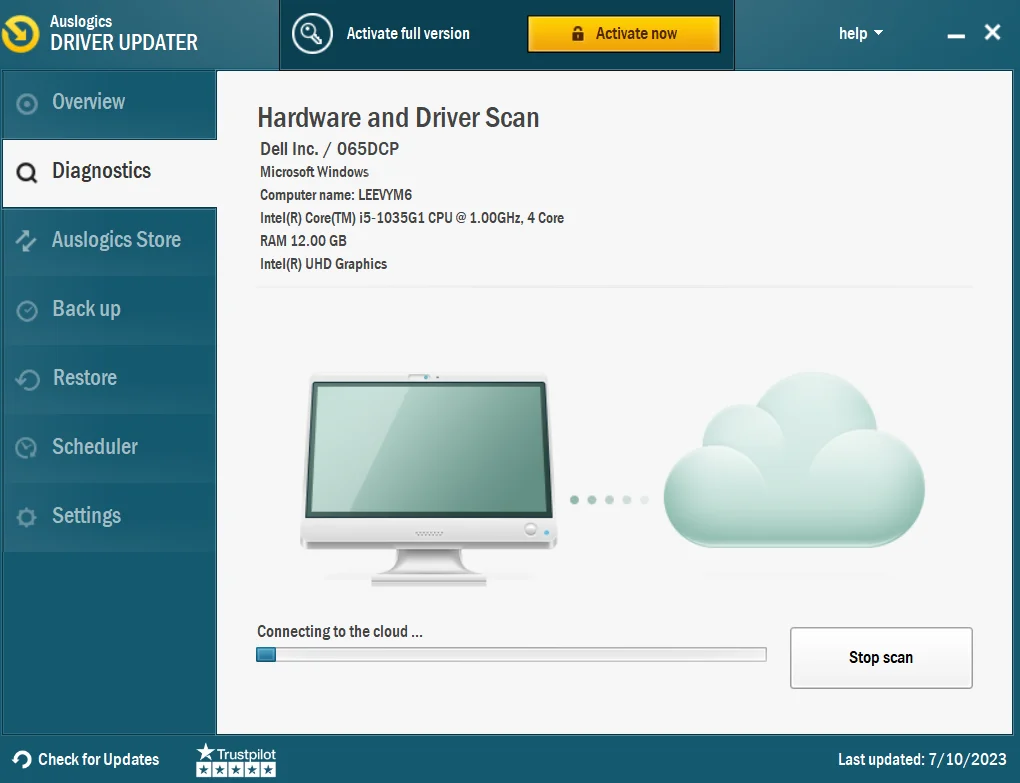
If you’ve tried the previous solution, and it still hasn’t fixed the error, you can try updating your network card drivers. You can manually do this or use a one-click solution like Auslogics Driver Updater.
To manually update your card drivers, go to Device Manager and search for Network Adapter. Then, right-click on each driver to update them. This can take a lot of your time.
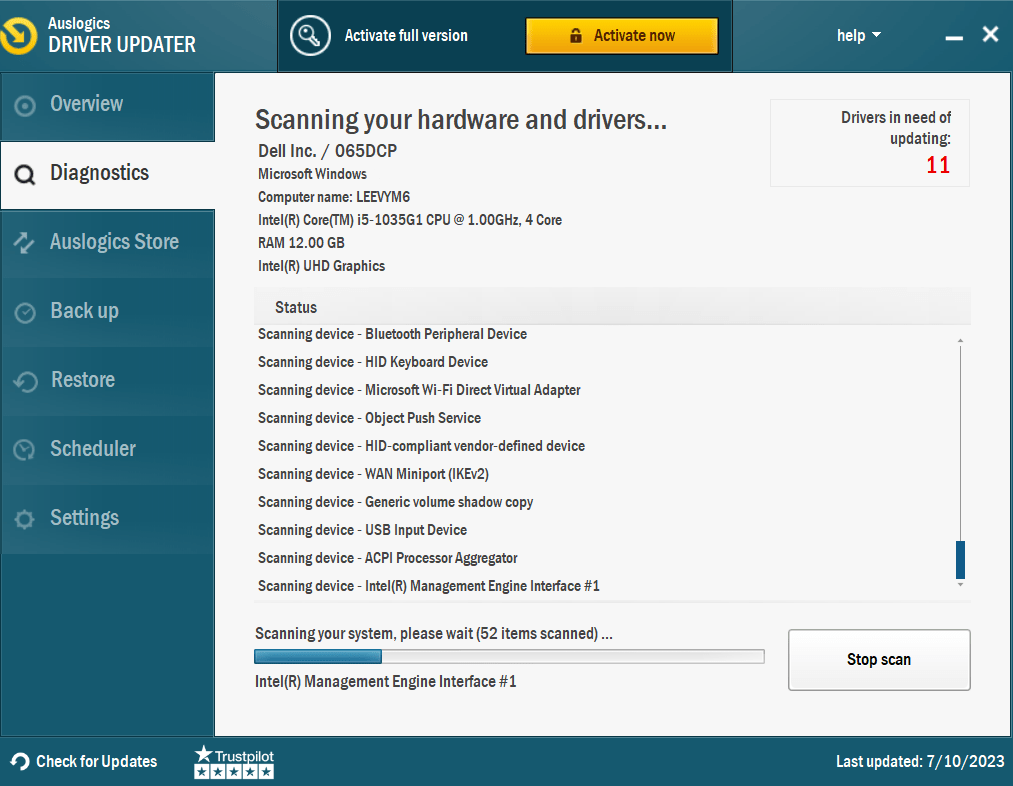
That’s why you should consider Auslogics Driver Updater. This software will automatically detect your operating system, search for the right driver, and automatically install them.
You can update your network card drivers to their latest manufacturer-recommended versions by clicking a button. This can help you fix the tcpip.sys error.
Related: Auslogics Driver Updater: New Drivers in One Click!
Fix 3: Use the blue screen troubleshooter
You can also use the blue screen troubleshooter to fix the tcpip.sys BSOD error. This tool aims to find and fix the root causes of blue screen issues. Follow these steps to use the blue screen troubleshooter:
- Click Start and choose Settings from the available options.
- Select Updates and Security and then click Troubleshoot.
- Click Blue Screen Troubleshooter from the available lists and run it.
- The troubleshooter will look for problems and immediately fix them if any are found. When the troubleshooter completes, restart your computer.
Fix this issue quickly
You can try using a safe and totally free tool developed by the Auslogics team of experts.
A few simple steps to troubleshoot the issue:
Download the tiny Auslogics TroubleShooter tool.
Run the application (no installation is needed).
The app will check for the issue mentioned in the article. When the scan is done, check that this is the issue you were looking to solve and click ‘Apply now’ to apply the recommended fix.
You can use the app to troubleshoot other malfunctions for free by simply typing in a brief description of the issue your PC is experiencing. Or you can scan your PC for performance issues using the My Scanner tab.
Related: How to Troubleshoot Blue Screen Error 0x00000109?
Fix 4: Uninstall recent updates.
- Click on
Windows + Rto start the Run. Then, typeappwiz.cpland click Enter. - Click on View installed updates in the Programs and Features window.
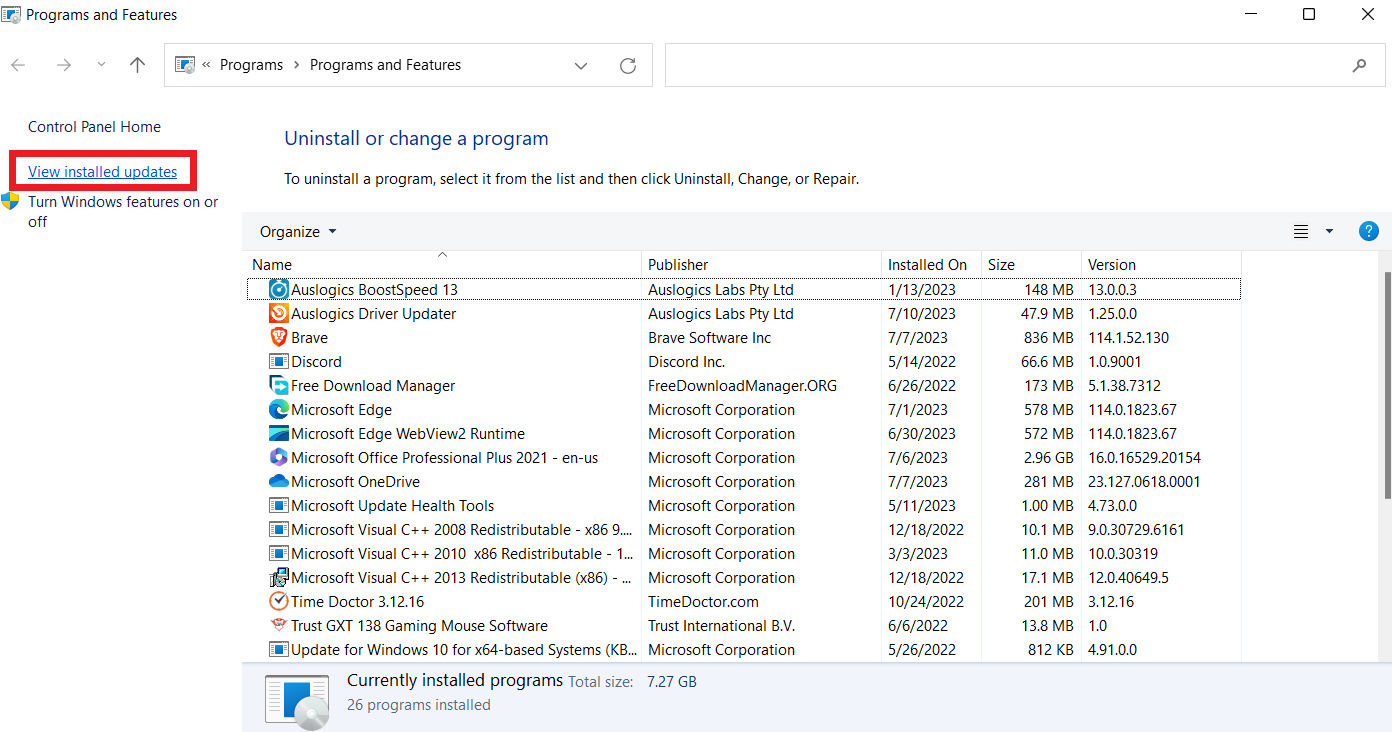
- Right-click on the update with an issue and click Uninstall under Uninstall an update.
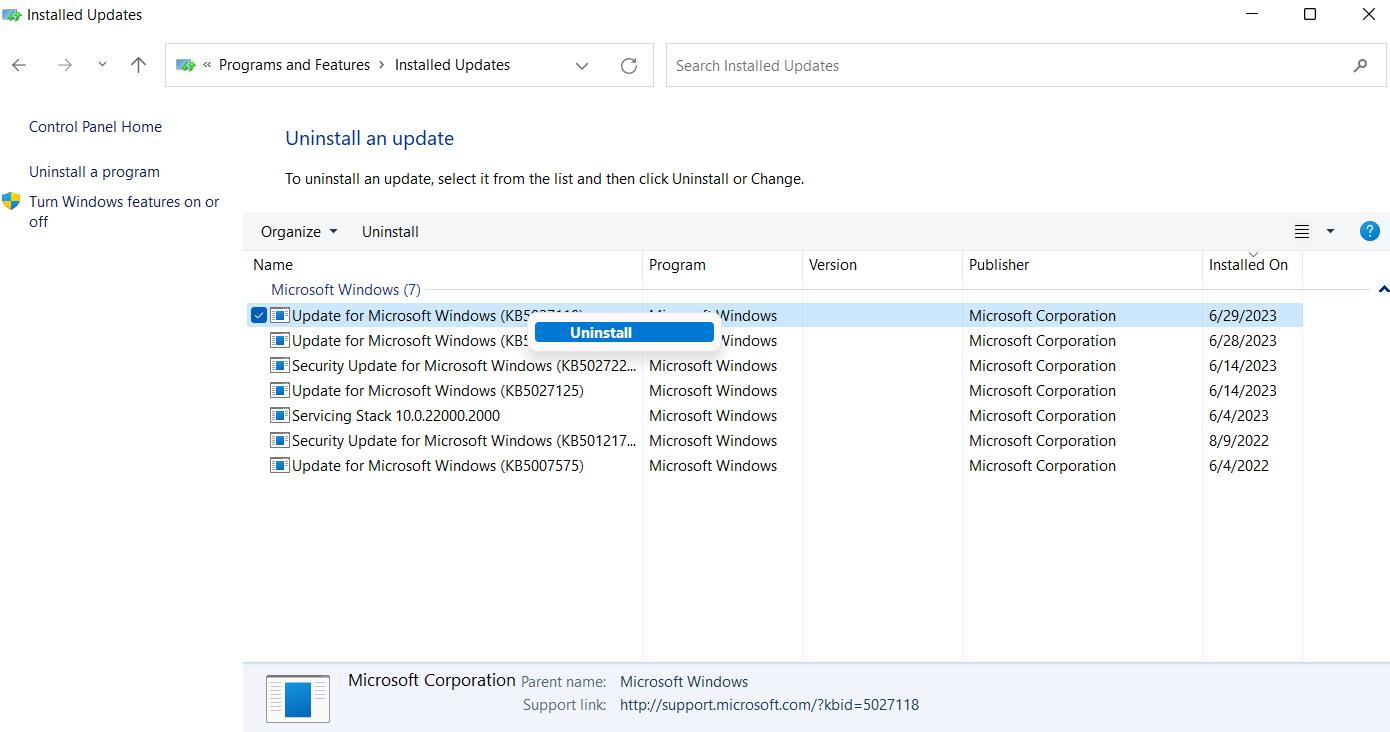
- After uninstalling, restart your computer and check if the problem is resolved.
Fix 5: Disable web protection.
Several user accounts say deactivating web protection has worked well to fix the tcpip.sys blue screen errors, even though it sounds counterintuitive. You can ask for help from the antivirus manufacturer.
Look for instructions specific to your software on the antivirus software’s official website. Follow the guidelines to disable site protection appropriately.
Conclusion
The tcpip.sys BSOD error on Windows 10/7/8 systems can be frustrating. It can happen for several reasons, including poor program installation, outdated or corrupt network drivers, clashing antivirus settings, etc.
You can resolve these issues by resetting the TCP/IP driver using Command Prompt. Another good alternative is manually updating network card drivers or using a trustworthy driver updater program like Auslogics Driver Updater.
You can fix the tcpip.sys BSOD error by implementing these solutions.
FAQ
What is TCP/IP?
TCP/IP stands for Transmission Control Protocol/Internet Protocol. It’s a collection of networking protocols that enables online communication and data exchange between devices.
Email, web browsing, file transfers, and other services are possible through TCP/IP, the backbone of modern Internet communication.
What can cause the Blue Screen of Death (BSOD)?
Windows will display the Blue Screen of Death (BSOD) when a system issue can’t be recovered. A BSOD may occur for several reasons, such as hardware issues, driver problems, software conflicts, etc.
| Информация о файле | Описание |
|---|---|
| Размер файла: | 2.6 MB |
| Дата и время изменения файла: | 2020:03:04 15:24:01+00:00 |
| Тип файла: | Win64 EXE |
| Тип MIME: | application/octet-stream |
| Тип компьютера: | AMD AMD64 |
| Метка времени: | 2003:12:07 09:54:51+00:00 |
| Тип PE: | PE32+ |
| Версия компоновщика: | 14.10 |
| Размер кода: | 1985536 |
| Размер инициализированных данных: | 815104 |
| Размер неинициализированных данных: | 0 |
| Точка входа: | 0x246010 |
| Версия ОС: | 10.0 |
| Версия образа: | 10.0 |
| Версия подсистемы: | 10.0 |
| Подсистема: | Native |
| Номер версии файла: | 10.0.16299.1087 |
| Номер версии продукта: | 10.0.16299.1087 |
| Маска флагов файлов: | 0x003f |
| Флаги файлов: | (none) |
| Файловая ОС: | Windows NT 32-bit |
| Тип объектного файла: | Driver |
| Подтип файла: | 6 |
| Код языка: | English (U.S.) |
| Набор символов: | Unicode |
| Наименование компании: | Microsoft Corporation |
| Описание файла: | TCP/IP Driver |
| Версия файла: | 10.0.16299.1087 (WinBuild.160101.0800) |
| Внутреннее имя: | tcpip.sys |
| Авторское право: | © Microsoft Corporation. All rights reserved. |
| Название продукта: | Microsoft® Windows® Operating System |
| Версия продукта: | 10.0.16299.1087 |
✻ Фрагменты данных файлов предоставлены участником Exiftool (Phil Harvey) и распространяются под лицензией Perl Artistic.
